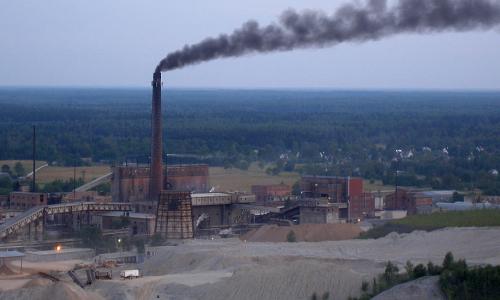Oil shale is a mixture of sand, silt, salt, and an insoluble organic substance called kerogen. Rock-like at room temperature, oil shale produces vapors and gases when heated, which in turn are condensed and turned into oil.
Oil shale shouldn't be confused with "shale oil," also called “tight oil,” a more commonly produced type of unconventional oil that's found trapped in limestone or sandstone rocks.
Because oil shale requires mining and energy-intensive refining processes, it's a substantially dirtier energy source than conventional liquid oil. Estimates vary, but turning oil shale into gasoline or diesel may lead to three or more times as many heat-trapping gas emissions than conventional oil.
At present, oil shale is not a commercially viable product in most of the world, as the same processes that make it dirty also make it expensive. In the United States, the largest oil shale deposits occur in Colorado, Utah, and Wyoming, but remain relatively untouched.
Environmental impacts of oil shale
Oil shale can be extracted via surface, underground, or "in-situ" mining, in which kerogen is heated underground and pumped to the surface. All these techniques demand significantly more energy than what's required for conventional liquid oil, producing more air and global warming pollution as a result.
Water pollution is another concern, as spills, leaks, and runoff from mining operations may interfere with groundwater supplies. And when extracted oil is shipped to refineries for processing, the trucks, trains, and pipelines that transport it introduce their own environmental impacts.
The solution: Half the Oil
Cutting US oil use is a better energy solution than increasing production of oil, especially when that production comes from extremely energy-intensive resources like oil shale. Cleaner fuels and fuel efficient cars and trucks can reduce the amount of oil we use—and avoid unconventional oil’s worst impacts—all while benefitting drivers, the environment, and the economy.
Meanwhile, operators and the oil industry should be held accountable for the emissions associated with different types of oil production, avoiding or mitigating additional emissions and impacts as much as possible. What oil we do use doesn't have to come from the dirtiest unconventional sources like oil shale, coal-to-liquid resources, or tar sands.




